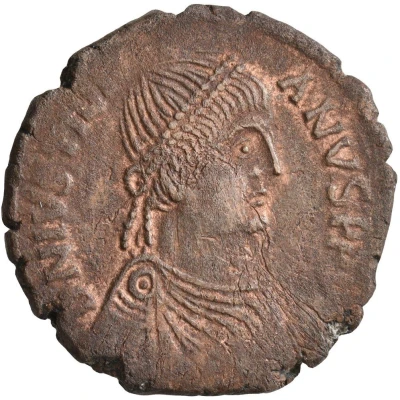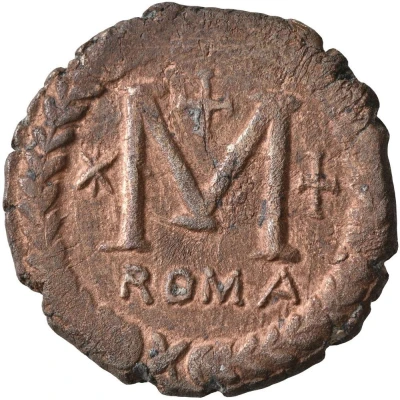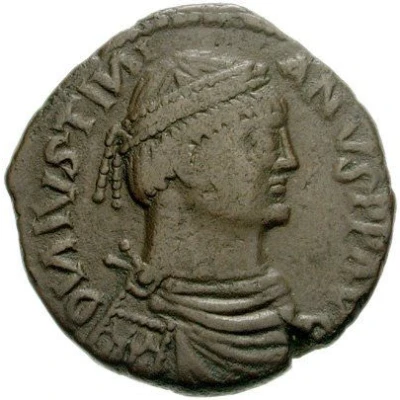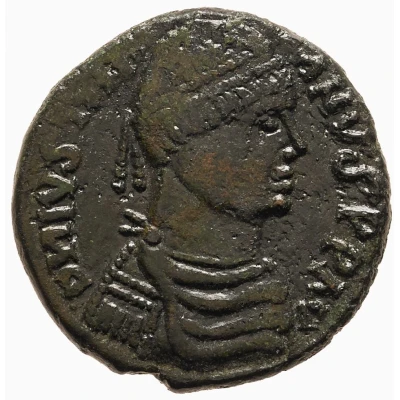
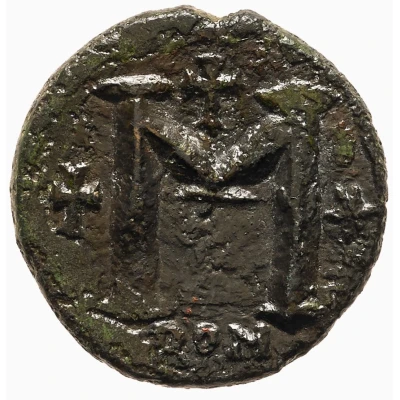

© Trustees of the British Museum
40 Nummi - Justinian I Rome; ☩M✶ ND
| Copper | 11 g | 29 mm |
| Issuer | Byzantine Empire (Byzantine states) |
|---|---|
| Emperor | Justinian I (527-565) |
| Type | Standard circulation coin |
| Years | 539-565 |
| Value | 1 Follis = 40 Nummi (1⁄180) |
| Currency | First Solidus Nomisma (498-720) |
| Composition | Copper |
| Weight | 11 g |
| Diameter | 29 mm |
| Shape | Round (irregular) |
| Technique | Hammered |
| Orientation | Variable alignment ↺ |
| Demonetized | Yes |
| Updated | 2024-10-04 |
| Numista | N#304637 |
|---|---|
| Rarity index | 100% |
Reverse
Large M between cross and star, cross above, ROMA in exergue, all within wreath.
Scripts: Greek, Latin
Lettering:
☩
☩M✶
ROMA
Translation:
M : "40" nummi (= 1 follis).
ROMA : "Rome".
Interesting fact
One interesting fact about the 40 Nummi coin featuring Justinian I is that it was issued during a time of significant economic and political change in the Byzantine Empire. The coin was minted during the reign of Justinian I, who ruled from 539 to 565 AD, a period known for its military campaigns, religious conflicts, and economic reforms. The coin's design, featuring the emperor's image and the imperial monogram, reflects the imperial ideology of the time, which emphasized the power and authority of the emperor. Additionally, the use of copper as the material for the coin reflects the empire's economic policies, which aimed to promote trade and commerce through the issuance of a standardized currency. Overall, the 40 Nummi coin provides a unique window into the history and culture of the Byzantine Empire during a time of significant change and transformation.
